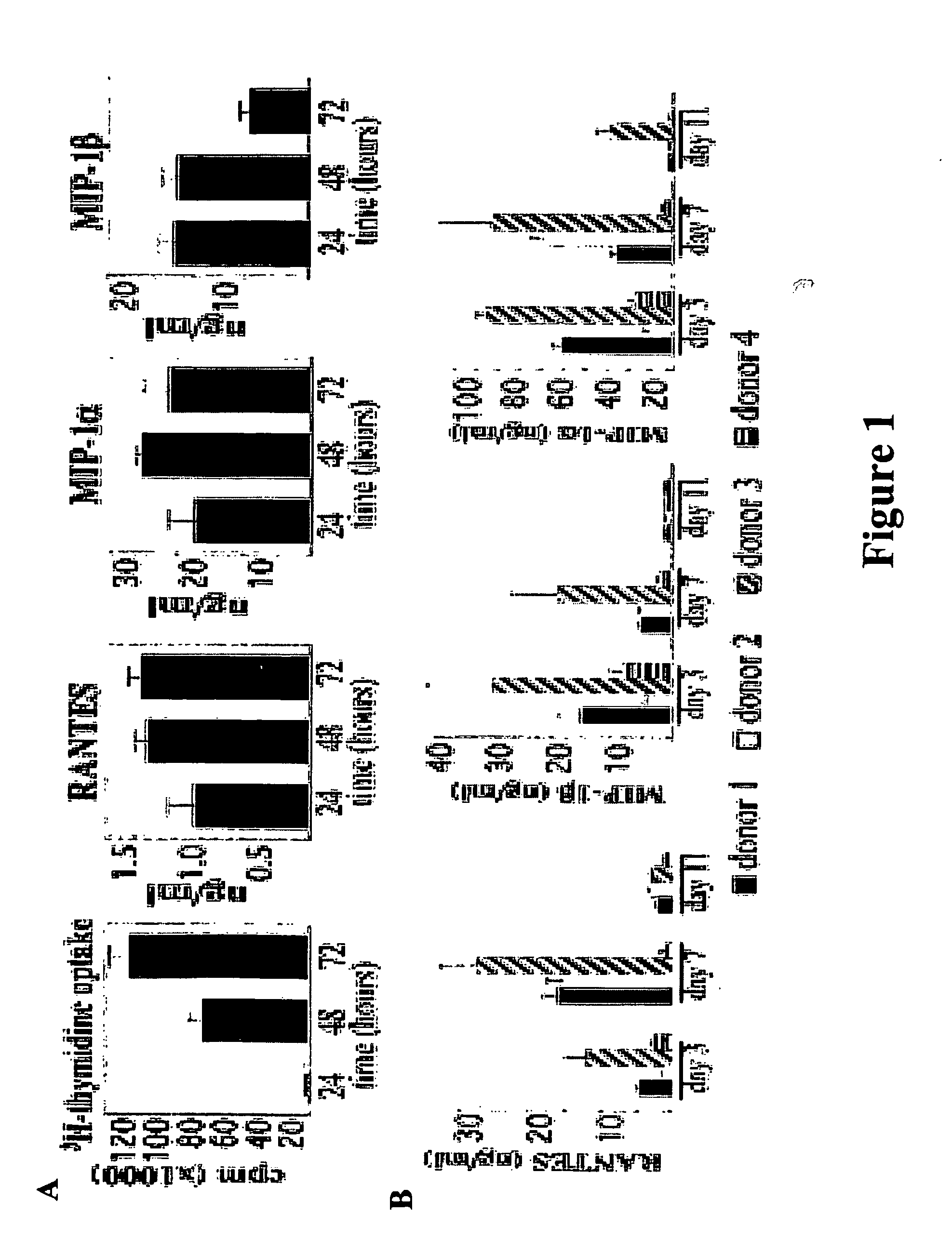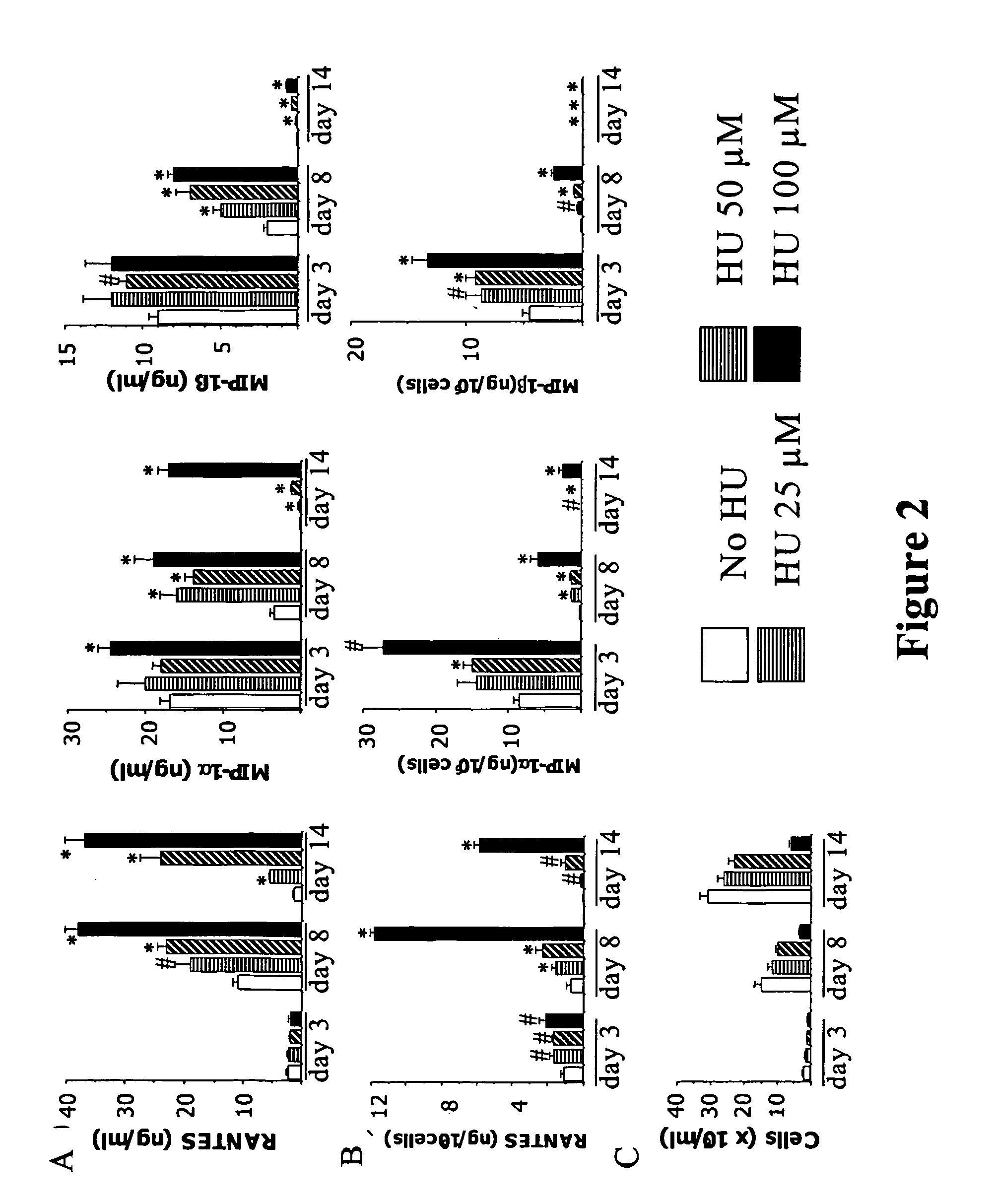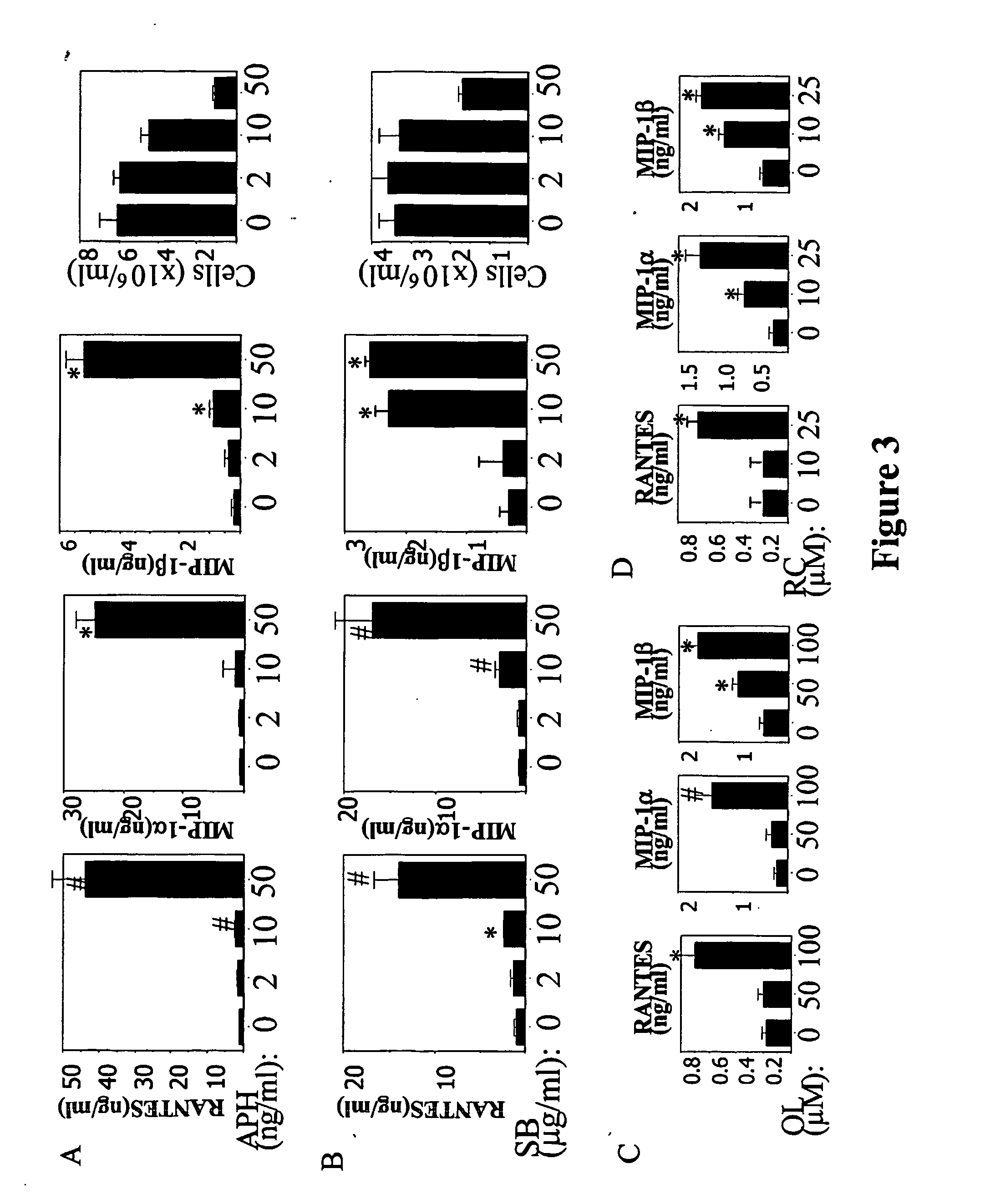Compositions for inducing increased levels of beta-chemokines and methods of use therefor
a technology of beta-chemokines and beta-chemokines, which is applied in the field of increased production of beta-chemokines, can solve the problems of inability to curative anti-retroviral drugs against aids, inability to achieve anti-hiv -chemokines, and inability to cure, etc., to achieve the effect of increasing the production or available levels of -chemokines, prolonging the g1 phase of the cell cycle, and enhancing the levels of anti-hiv
- Summary
- Abstract
- Description
- Claims
- Application Information
AI Technical Summary
Benefits of technology
Problems solved by technology
Method used
Image
Examples
example 1
[0148] Kinetics of β-Chemokine Secretion on Activated PBMCs.
[0149] To determine the kinetics of β-chemokine secretion in relation to DNA synthesis on cellular activation, PBMCs were activated by PHA treatment for 72 h. At 24 h after plating the cells, the entire supernatant was collected, and fresh medium containing PHA was added to the culture. Twenty-four hours later (48 h from the time cells were plated), supernatants again were collected and PHA medium was added. Supernatants were collected for the last time after 72 h. Thus, this experiment measured the amount of chemckine released to the culture medium during each 24-h interval, not the continuous accumulation of chemokine over 48 or 72 h of exposure to PHA. Cellular DNA synthesis was measured by assaying [3H]thymidine incorporation in parallel wells at 24, 48, and 72 h after plating of the cells. Results are shown in FIG. 1A. At 24 h after the beginning of PHA treatment, chemokine protein concentration in the culture superna...
example 2
[0151] Treatment of PBMC Cultures with Compounds That Arrest the Cell Cycle in G1 Results in Increased Levels of Secreted β-Chemokines.
[0152] Because the previous experiments indicated that β-chemokine secretion by activated PBMCs begins before DNA synthesis occurs, it was further tested to determine whether delay of entry in the S phase of the cell cycle results in an overall increase in chemokine levels. To this end, β-chemokine levels (production or availability) by activated PBMCs cultured in the presence of HU was investigated. HU is a G1 cytostatic drug that, by depleting intracellular nucleotide pools, arrests cell cycle progression in late G1 (Lori, et al., 1994). FIG. 2 shows chemokine levels by activated PBMCs cultured in the presence of different concentrations of HU for 14 days. HU treatment resulted in increased concentrations (ng / ml) of RANTES, MIP-1α, and MIP-1β in the culture supernatants in a dose-dependent manner (FIG. 2A). In the representative experiment depicte...
example 3
[0154] Having demonstrated that HU treatment of activated PBMCs results in increased chemokine levels, observations were extended to other G1 cytostatic agents that, as does HU, arrest cell cycle progression before DNA synthesis occurs. The agents evaluated were SB, APH, RC, and OL. SB and APH arrest the cell cycle in early and late G1, respectively (Korin, et al., 1998; Koostra, et al., 2000). RC and OL are purine-derivative drugs that arrest cell cycle progression in late G1 through inhibition of cyclin-dependent kinases (CDKs) (Gray, et al., 1999). FIG. 3A shows chemokine levels produced by activated PBMCs cultured in the presence of APH. The number of viable cells and chemokine levels are depicted. Increased chemokine values were observed at 0.5 μM APH, a drug concentration that exhibited G1 cytostatic effects as manifested by reduced cell proliferation. FIG. 3B shows chemokine levels produced by activated PBMCs cultured in the presence of SB. As was the case with APH, increased...
PUM
| Property | Measurement | Unit |
|---|---|---|
| Magnetic field | aaaaa | aaaaa |
| Electric charge | aaaaa | aaaaa |
| Composition | aaaaa | aaaaa |
Abstract
Description
Claims
Application Information
 Login to View More
Login to View More - R&D
- Intellectual Property
- Life Sciences
- Materials
- Tech Scout
- Unparalleled Data Quality
- Higher Quality Content
- 60% Fewer Hallucinations
Browse by: Latest US Patents, China's latest patents, Technical Efficacy Thesaurus, Application Domain, Technology Topic, Popular Technical Reports.
© 2025 PatSnap. All rights reserved.Legal|Privacy policy|Modern Slavery Act Transparency Statement|Sitemap|About US| Contact US: help@patsnap.com



